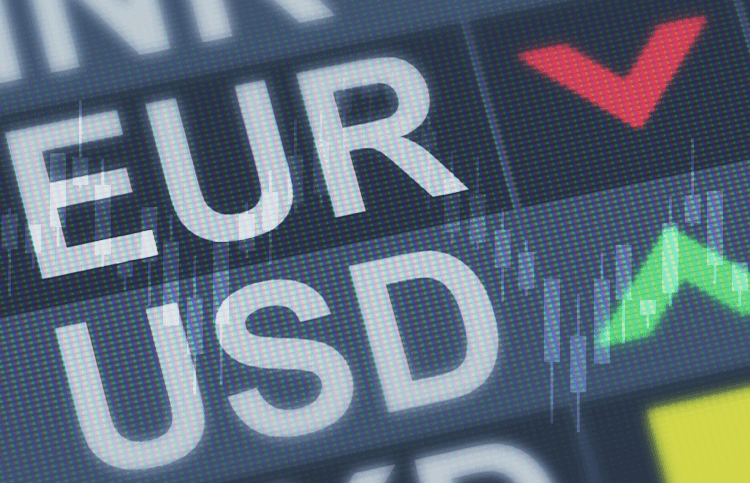The History of the EUR/USD
The EUR/USD has a rich history as it traces the competitive nature of the relationship between the U.S. and Europe. In this article, we will summarise the history of the EUR/USD currency pair to see how the pair came to be and how it became so important in the world of Forex.

Prior to the development of the Euro, there were several attempts to create a stable joint European economy. The first attempt, in 1957, was called the European Economic Community (EEC), which aimed for the economic integration of six countries (Germany, France, Italy, Belgium, the Netherlands and Luxembourg) and the free movement of people, goods, and services across their borders. The EEC eventually became the European Community (EC) in 1993, upon the establishment of the EU into which it was formally absorbed.
The next move forward was the implementation of the European Monetary System (EMS). The EMS was established in 1979 as an adjustable exchange rate arrangement. This system remained in place until 1999, and promoted monetary stability throughout Europe by reducing large exchange rate fluctuations between the members of the European Community. The EMS was eventually replaced by the European Economic and Monetary Union (EMU), which was responsible for the creation of the euro.
The EURUSD Forex pair (colloquially known as the ‘Fibre’) was introduced in 1999, when the Euro emerged as a replacement for several separate national European currencies. Up until that time, each individual European currency, such as the German Deutschmark and the French Franc, had been compared individually against the dollar. This change may have made Forex easier for traders, as it allowed them to work with a single European based currency pair instead of multiple pairs from the different countries. The initial valuation of the Euro against the dollar was based on the value of the European Currency Unit, a symbolic currency based on a basket that contained currencies from several European countries.
Although the Euro was initially introduced as a way to help simplify accounting among the Eurozone countries, Euro paper money and coins were not rolled out to the general public until 2002, when the first twelve European Union countries formally adopted the Euro. It is not mandatory to use the Euro to be a part of the EU, and as of 2021 only 19 of the 27 EU members have adopted the Euro as their formal currency.
The EUR/USD started out at a value of 1.1795, but quickly dropped to a low of 0.8225 in October 2000. The currency pair hit a high of 1.6037 in July 2008 during the U.S. subprime mortgage crisis. The divergence in prices at this time might be due to the different approaches the Federal Reserve and the European Central Bank adopted to combat the economic crisis. For instance, during this period the Federal Reserve was aggressive about purchasing bonds to help stimulate the U.S. economy. This process is known as quantitative easing (QE).
While the U.S. pursued an aggressive bond purchasing program, the ECB resisted QE for several years. This may have made the Euro look stronger than the dollar, encouraging traders to buy Euros, further widening the price gap until Greece’s sovereign debt crisis reached a critical point in October 2009. The Euro once again weakened against the Dollar when the ECB began their own qualitative easing program in January 2015.
During the COVID-19 pandemic, the EUR/USD price has fluctuated in response to news about infection cases and vaccination rates. For example, when cases first began appearing in Europe in early 2020, the Euro weakened against the Dollar. However, the Forex pair eventually rebounded as the situation in the U.S. worsened.
The EUR/USD is sensitive to several types of events. We can see from its history that government policies such as quantitative easing and events like Greece’s debt crisis can have a significant impact on the Forex pair’s price. Traders may wish to review the EUR/USD’s trading history in order to better prepare for similar events in the future.
